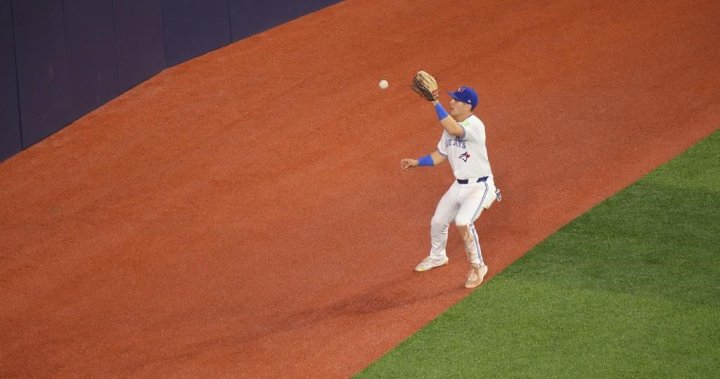
Rogers Centre renovations changed how it plays
Global News
Daulton Varsho loves to go all out when tracking down a fly ball but the new smaller foul areas at Rogers Centre have him being a little more cautious.
TORONTO – Daulton Varsho loves to go all out when tracking down a fly ball but the new smaller foul areas at Rogers Centre have him being a little more cautious.
The Toronto Blue Jays completed the second phase of $400 million renovations to their downtown ballpark in the off-season, with the changes designed to improve the fan and player experience as the stadium becomes a baseball-specific venue. But the renovations altered the field’s dimensions, with 2023’s Phase 1 bringing in the outfield walls and making them higher and then the foul areas were shrunk ahead of this season as part of Phase 2.
Part of shrinking the foul territory was building higher walls in the outfield parallel to the first- and third-base lines.
“It’s a little dangerous just because you have to know if you’re gonna go into that wall how to collide with it,” said Varsho, who typically plays in left field. “It happened to me the other day where if you go into the wall with your feet, there’s a good chance of spraining your ankle or hitting a really bad spot
“You almost have to slide and then move your body so your body takes the hit into the wall.”
Phase 1 focused on redoing the stadium’s upper bowl and creating new fan zones, but as part of that the left-centre field was brought in by seven feet to 368 feet but the wall’s height went up to 11 feet, two inches. The right-centre field wall moved up 16 feet to 359 feet and its height was raised to 14 feet, four inches high.
The second phase reduced foul territory by about 3,000 square feet and walls were put in that run alongside the foul lines where previously there were low stands where outfielders could lean into — sometimes into the laps of fans — to grab a foul ball. Installing those side walls and narrowing the foul territory has changed how outfielders like Varsho run to the ball.
“Balls hit coming down there, they’re gonna hug that wall so it’s like you almost have to play goalie and be able to stop it,” said Varsho, noting it’s no longer possible to run a curving route toward the ball, getting square to home plate for a more stable catch. “There’s no being able to get around it and coming through it anymore.

 Run 3 Space | Play Space Running Game
Run 3 Space | Play Space Running Game Traffic Jam 3D | Online Racing Game
Traffic Jam 3D | Online Racing Game Duck Hunt | Play Old Classic Game
Duck Hunt | Play Old Classic Game